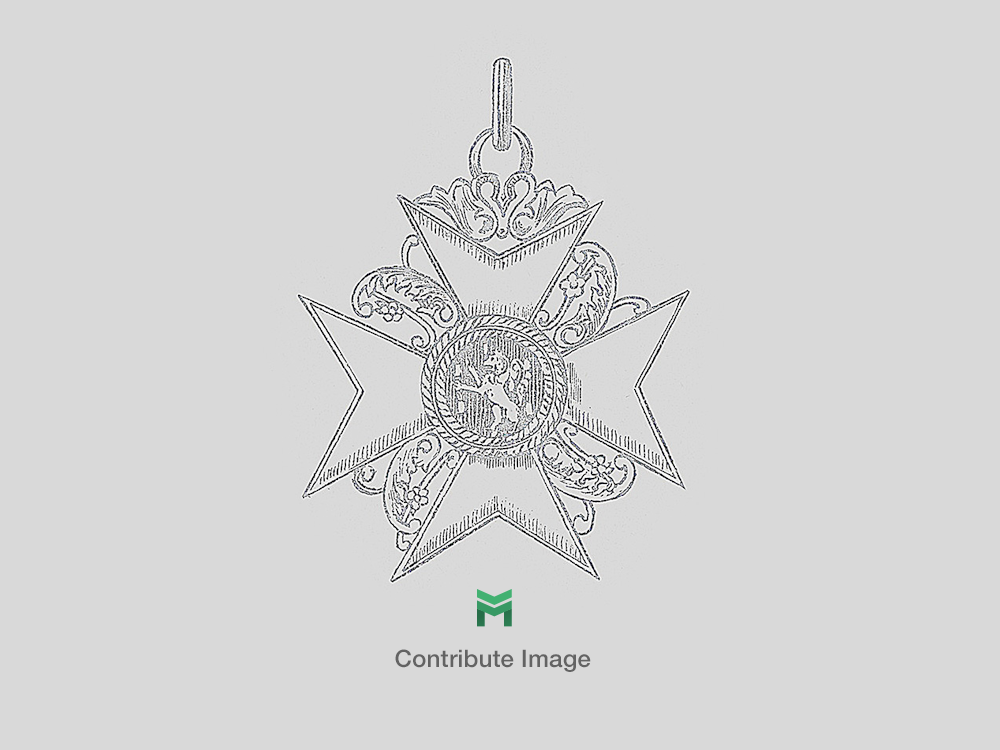German Army Motorcycle Officer's Dress Tunic
CATEGORY: Version
SKU: 20.GOR.02.01.01.01.02.020.000
Estimated market value:

Estimated market value:
The Dress Tunic was introduced on June 29, 1935. It was worn by all members of the Heer during parades and ceremonial occasions, and as a walking-out dress.
The tunic is field-grey with a dark blue-green collar and dark blue-green cuff-facings, and has branch colour piping down the edge of the front overlap, down the front edge of the collar and around the collar base, on the upper edges of the cuff-facings, and down the two tunic flaps in the back.
The collar has a stand-up and fall-down part. There are eight silver-white metal buttons down the front. Three more buttons are attached to each of the two tunic flaps on the back, and one non-functional button to each of the four cuff-facing patches. General ranks had gold-coloured buttons.
The tunic has no pockets, except for two hidden pockets in the tunic tail.
Tunics for higher ranked soldiers are generally made from materials of superior quality. There are four different rank segments wearing slightly but distinctively different tunics: EMs (enlisted men), NCOs (non-commissioned officers), officers, and generals. General rank tunics can be identified not only by the gilt buttons, but also the ornate gilt embroideries on their cuff and collar patches. All other ranks had so-called Litzen (flat braid) on their cuff and collar patches. Those of officers were made of superior quality material and are more elaborate in design compared to the rather plain ones of EMs and NCOs. The difference between EM and NCO tunics lies in another type of flat braid, so-called Tresse (trimming), along the edges of the cuffs and collars, similar to those on NCO rank shoulder straps.
Tunic insignia, such as breast eagles, collar tabs, or shoulder boards will differ from rank to rank. For more information, see the appropriate entries in the Insignia subcategory.
Production of the dress tunic was discontinued with the outbreak of the war.
A special version was introduced on September 15, 1939 for members of the Infantry Regiment “Großdeutschland”. It has white piping and white metal buttons. The collar Litzen are elongated. Officer tunics have two collar Litzen, while those for EMs and NCOs only have one. There are three cuff-patches per cuff, which are of the so-called “French” cuff patterns.
Only very few jackets were ever given out due to the outbreak of the war, and it was never manufactured in great numbers.
Chaplains wore an Überrock (frock coat) in place of the Dress Tunic. For more information, see the Coats subcategory.
Branch colours on German Heer headgear was as follows:
Black was worn by Engineer units.
Black/White was worn by Panzer Engineers.
Copper Brown was worn by Motorcycle personnel.
Light Brown was worn by Signals units until 1936, and by Construction troops.
Carmine was worn by the Führer Staff, General Staff Officers, Staff Officers of the Supreme Command of the Army, and all Veterinary branches.
Bordeaux Red was worn by Smoke & Chemical personnel.
Wine Red was worn by Judicial officials.
Bright Red was worn by Generals, Artillery units, and Ordnance Officers (until 1944).
Rose or Pink was worn by all Armored units (including Panzer troops, and Schützen Brigade Staff).
Orange was worn by Recruiting personnel, Ordnance troops, Ordnance Officers (since 1944), and Field Gendarmerie units.
Bright yellow was worn by Cavalry units, and Light Division Staff.
Lemon yellow was worn by Signal units.
White was worn by Infantry units.
Light Grey was worn by Propaganda personnel.
Grey-Blue was worn by Sonderführer (Specialist Officers).
Violet was worn by Chaplains and Field Bishops.
Cornflower Blue was worn by Medical units, and Supply units.
Bright Blue was worn by Transport troops.
Bright Green was worn by Jäger and Mountain units.
Grass Green was worn by Panzer Grenadier units (Armored Infantry).
Dark Green was worn by Administrative personnel.

Comments
Sign in to comment and reply.


Scroll Top